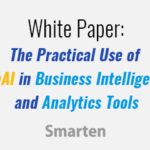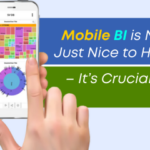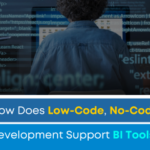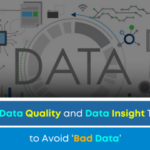
Whether we know it or not, we use Natural Language Processing every day. It makes it easier for us to interact with computers and software and allows us to perform complex searches and tasks without the help of a programmer, developer or analyst.
In this, the last article in our three-article series we discuss Natural Language Processing and how it can benefit a business.
What is Natural Language Processing (NLP) Driven Analytics?
Natural Language Processing (NLP) is an integral part of today’s advanced analytics. If you have clicked in the search window on Google and entered a question, you know NLP! When NLP is incorporated into the business intelligence environment, business users can enter a question in human language. For example, ‘which sales team member achieved the best numbers last month?’ or ‘which of our products sells best in New York?’
The system translates this natural language search into a more traditional analytics query, and returns the most appropriate answer in the most appropriate form, so users can benefit from smart visualization, tables, numbers or natural language descriptions that are easy to understand.
How Does NLP-Based Analytics Benefit a Business Organization?
Perhaps the most important benefit of NLP is that it allows the business to implement Augmented Analytics in a self-serve environment with very little required training and ensures that users will adopt business intelligence and analytics as a tool to use every day.
NLP allows the enterprise to expand the use of business intelligence across the enterprise by offering business users an intuitive tool to ask for and receive crucial data and to understand the analytical output and share it with other users.
NLP opens and expands the data repositories and information in an organization in a way that is meaningful, and easy to understand, so data is more accessible and answers are more valuable. This will improve the accuracy of planning and forecasting and allow for a better overall understanding of business results.
Natural Language Processing helps business users sort through integrated data sources (internal and external) to answer a question in the way the user can understand, and will provide a foundation to simplify and speed the decision process with fact-based, data-driven analysis.
The enterprise can find and use information using natural language queries, rather than complex queries, so business users can achieve results without the assistance of IT or business analysts.
NLP presents results through Smart Visualization and contextual information delivered in natural language. Because these tools are easy to use and to understand, users are more likely to adopt them and to add value to the organization.
With NLP searches and queries, business users are free to explore data and achieve accurate results and the organization can achieve rapid ROI and sustain low total cost of ownership (TCO) with tools as familiar as a Google search.
Users can combine NLP with Plug n’ Play Predictive Analysis or Assisted Predictive Modeling so the organization can achieve data democratization.
NLP and the Advanced Data Discovery tools it supports can provide important, sophisticated tools in a user-friendly environment to suggest relationships, identify patterns and trends, and offer insight to previously hidden information so business users can ‘discover’ subtle, crucial problems and opportunities.
Natural Language Processing (NLP) is an integral part of today’s Advanced Analytics. It establishes an easy-to-use, interactive environment where users can create a search query in natural language and, as such, will support user adoption and provide numerous benefits to the enterprise.
For more information on this topic read, ‘What is Clickless Analysis? Can it Simplify Adoption of Augmented Analytics? (Part 1 of 3 articles)’ and, ‘What is Search Analytics and Can it Improve Self-Serve Data Discovery? (Part 2 of 3 articles)’
Original Post: What is Natural Language Processing & How Does it Benefit a Business? (Part 3 of 3 articles)










